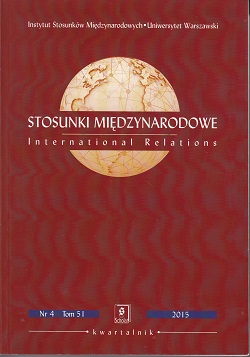Stany Zjednoczone - hegemonia w regionie Azji i Pacyfiku w latach 1985-2015
The United States - A Hegemony in the Asia-Pacific Region in 1985-2015
Author(s): Aleksandra JarczewskaSubject(s): Politics / Political Sciences, Politics, Political Sciences, International relations/trade
Published by: Wydawnictwo Naukowe Scholar Sp. z o.o.
Keywords: theUnited States, Asia-Pacific region; China; hegemony; strategy; alliance; economic cooperation; TPP
Summary/Abstract: After the end of World War II the United States achieved a hegemonic position in the international system, and despite a relative decrease in its power and the growth in importance of other states it has kept this position until the present time. The country is active in almost all the regions of the world, but the areas it considers particularly important are the Transatlantic and the Transpacific (the Asia-Pacific region) regions. Historically, the latter direction was the area through which the United States entered into grand world politics. Presently, it is considered an area of key importance to the country’s interests, for both security and economic reasons. The aim of this article is to present the United States’ relations with the countries of the Asia-Pacific and determine the US’s position in the region in terms of the last three decades, that is a period of great changes and redefinitions in the international arena. It has been assumed that in the period in question the United States played the role of the dominant power in the Asia-pacific region, which the majority of the region’s countries accepted (especially the smaller and weaker ones, fearing the domination of a single strong actor from the same region) and owing to which the United States have been able to effectively pursue its own interests.
Journal: Stosunki Międzynarodowe
- Issue Year: 51/2015
- Issue No: 4
- Page Range: 37-66
- Page Count: 29
- Language: Polish

